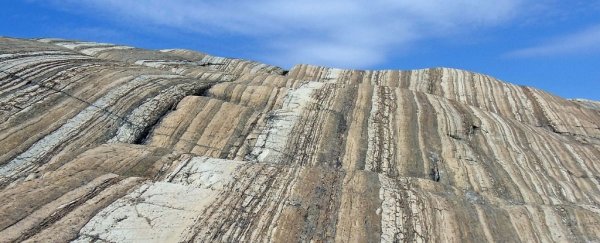You've probably heard before that Earth has witnessed five mass extinctions. It's a number plucked straight from the fossil record, but that's not the whole picture, not even close.
Evidence from ancient rocks reveals the oldest die-off in our planet's history most likely occurred among single-celled organisms more than 2 billion years ago. A recent analysis now suggests that deadly event was far bigger than any known loss of life that came after, even the dinosaur extinction.
"This shows that even when biology on Earth is comprised entirely of microbes, you can still have what could be considered an enormous die-off event that otherwise is not recorded in the fossil record," says geologist Malcolm Hodgskiss from Stanford University.
Researchers describe this time as a tale of 'feast and famine', long before the rise of complex life and far beyond the fossil record. Starting 2.4 billion years ago, oxygen in Earth's atmosphere was scarce, mostly trapped in minerals or locked up in water.
Then, cyanobacteria arrived on the scene, and these tiny marine microorganisms had the ability to photosynthesise, using sunlight to 'breathe' oxygen up into the air.
The Great Oxidation Event (GOE) was a time of feasting, as life flourished and diversified and spread. And then, for some reason, it all came to an abrupt and catastrophic end.
To figure out why, scientists at Stanford turned to a mineral called barite, which is found on the Belcher Islands of subarctic Canada. The landscape here has survived for billions of years, which means it holds a long record of oxygen in our planet's atmosphere.
Measuring oxygen, sulfur and barium isotopes found in these rocks, the authors found negative oxygen isotopes occurring shortly after the GOE, some 2.05 billion years ago. This would have required a rapid reduction in the primary production of bacteria, dropping by more than 5 fold and potentially by as much as 200 fold.
Such an enormous collapse, the authors argue, was probably triggered by a lack of critical nutrients, such as phosphorus, which is an important factor in determining the distribution and development of cyanobacteria.
"This drop was likely brought about by a large decrease in nutrients supplied to the biosphere that, in turn, marked the conclusion of the GOE and ushered in the subsequent 1-billion-year interval characterised by markedly low and stable [gross primary production] compared with the modern Earth," the authors write.
The findings support the "oxygen overshoot" theory, which suggests that when oxygen-releasing microorganisms first began to flourish in the ocean, they hit a critical peak and their supply of nutrients could no longer sustain them, leading to a decrease in atmospheric oxygen.
The new data simply strengthens the idea that a nutrient famine is closely tied to atmospheric oxygen levels.
"Some of these oxygen estimates likely require too many microorganisms living in the ocean in Earth's past," says geochemist Peter Crockford from the Weizmann Institute of Science and Princeton University.
"So we can now start to narrow in on what the composition of the atmosphere could have been through this biological angle."
If the team has it right, the deadly event that struck these microorganisms so long ago would have to be of the most pronounced biotic changes across all of Earth's history, even more so than the instances where as many as two-thirds of all plant and animal life disappeared.
"Cumulatively these findings suggest the end-GOE transition was potentially one of the largest sustained shifts in the productivity of the biosphere, rivalling the colonisation of the terrestrial realm by land plants and the Permo-Triassic mass extinction and perhaps even approaching the advent of oxygenic photosynthesis in magnitude," the authors conclude.
The findings were published in Proceedings of the National Academy of Sciences.
